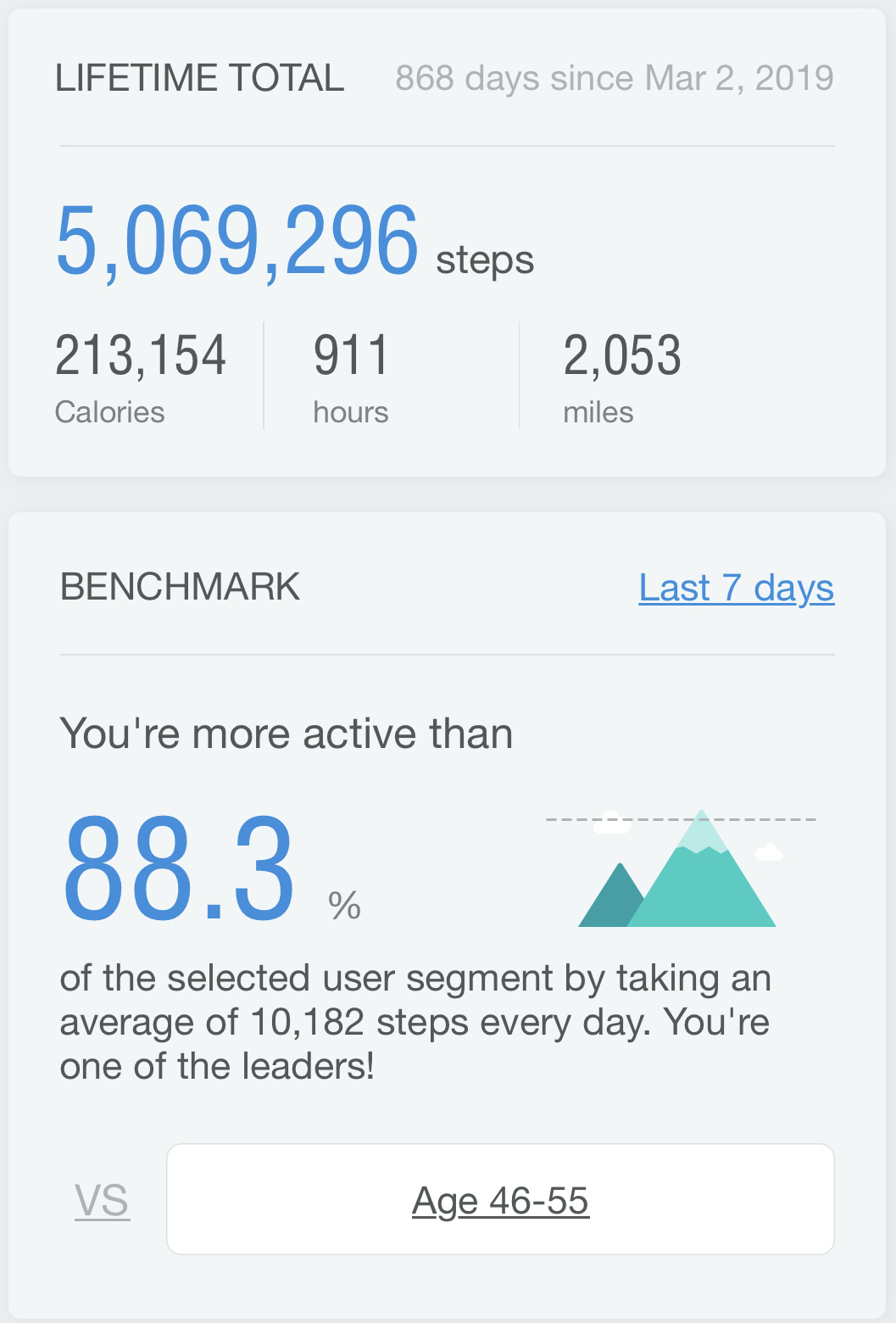Doubling Your Walk’s Health Benefits

I never thought I’d have to learn to walk again.
But after five life-saving operations in early 2019, that’s exactly what happened to me.
After nearly a dozen incisions in my abdomen from a GI surgery-gone-wrong, muscle-deteriorating sepsis, and five rounds of anesthesia, I’d lost 40 pounds. I’d never been more frail in my life.
I was terrified I’d never get my “normal” life back...
At first, I had to use a walker to get around in the Intensive Care Unit (ICU) and could only take a few baby steps before having to stop from total exhaustion. Little by little, I was able to go farther. But I was still a long way from “normal.”
After I was discharged from the hospital, I had an in-home nurse who helped care for me for a few months.
She told me right off the bat that if I wanted to get better faster, I’d have to force myself to get off the couch and try to walk—every single day.
That was perhaps the most useful advice I received for my recovery…
Walking works wonders
After a few walks per week, I upped the ante to a few walks per day.
If the weather was bad, I’d still walk—even if it was just a few laps around the house. I was determined to do everything in my power to get my strength back.
Gradually, I started incorporating a simple but powerful rhythmic breathing exercise to my walks. This gave me something else to focus on other than my pain, and helped me push through it all and keep going.
I continued this breathing/walking combination for the rest of my healing process. I attribute this—combined with a healthy diet and plenty of rest—to speeding up my recovery and helping me to get my strength back.
And research backs up my experience…
Better mood, stronger bones, weight loss—and more
According to the Mayo Clinic, taking a daily walk can improve your health in many ways, like:
- Boosting mood
- Improving balance and coordination
- Melting off excess body fat
- Preventing or improving many chronic conditions (including heart disease, high blood pressure and type 2 diabetes)
- Reducing stress
- Strengthening your bones and muscles
And according to a wealth of studies, controlling your breathing not only improves your endurance and heart health, but can also boost your metabolism, mood, and energy levels.
So when you combine these two natural bodily processes in a purposeful way, you can potentially double your health benefits!
Double your walk’s health benefits
Combining walking with controlled breathing works to alter the basic rhythms of your body on a deep, cellular level.
In fact, a 2018 12-week study published in the European Journal of Cardiovascular Nursing found that combining controlled breathing with walking for six minutes a day significantly improved the exercise tolerance, anxiety levels, and quality of life in 90 heart failure patients.
And in a 2007 study, researchers found that this method helped improve metabolism and mood in insulin-resistant hepatitis C patients.
So, as you can see, this approach has lots of health benefits, even beyond healing from surgery.
Your gym-less, no-frills whole-body workout
This technique was one of the few things I could physically do that provided me with some degree of relief during my recovery period.
It also proved to be a powerful way to maintain an exercise routine, manage my post-surgery pain and anxiety, and get even more of a benefit from my walks.
And I’m happy to report that over this past year, I’ve kept at it.
I found that tracking my progress was also helpful in keeping me consistent and accountable.
Today I wanted to share my results in hopes it might inspire you to see what’s possible for your health:

As you can see, every single step, minute, and mile really add up…
Adding rhythm to your walk
Now, I’ll show you how to do this powerful healing technique, which I like to call “Rhythmic Breathing for Walking.”
And even though I’m fully recovered from my surgery, I still use to it clear my mind and relax my body.
The goal here is to match your breathing with your steps.
- Start walking at a comfortable pace.
- Breathe in through your nose for 4 seconds.
- Hold for 4 seconds.
- Breathe out through the mouth for 4 seconds.
- Continue this cycle for a total of 6 times, then take a break and breathe at your own pace.
- Repeat the steps above for one more cycle.
- Feel free to continue walking while breathing normally, or continue for more cycles.
I also created an instructional video, if you’d like to do it along with me. Just click here.
Remember, it’s okay to stop the cycled breathing or walking at any time if you feel uncomfortable, short of breath, or dizzy. Do what feels best for you.
For an added challenge, increase the duration of your breathing, or increase your walking pace.
Generally, you want to shoot for about 20 to 30 minutes per day.
Personally, I like to take at least a 60-minute walk each day. Sometimes I do it all at once, or sometimes I break it up with afternoon and evening walks. What matters most is that you just get moving!
One year later, I’m STILL walking and jogging five times per week. And I’m happy to report that I not only feel like myself again—but a happier, healthier version.
Take it from me, from the moment you take that first step, you’re walking down the path toward a better you. It’s my hope that—especially in times like these—you lean on simple, every day interventions to help support both your body and your mind.
Why miss out on a single article when you can get them delivered straight to your inbox for free?
The material provided on this site is for educational purposes only and any recommendations are not intended to replace the advice of your physician. You are encouraged to seek advice from a competent medical professional regarding the applicability of any recommendations with regard to your symptoms or condition.
Copyright © 2021 by BlueBeat Media. Thank you for your interest in Jim Donovan. We do not allow republication of our full newsletters and articles. However, you can post a portion (no more than 90 words, 1-2 paragraphs) of our content with a live link back to our homepage, donovanhealth.com, or a link to the specific article you are quoting from.
SOURCES:
Bumgardner, W. (2020). How to Breathe for Better Walking. VeryWellFit.com. Retrieved from: verywellfit.com/breathing-how-
Bumgardner, W. (2020). Breathwalk for Energy and Stress Relief. VeryWellFit.com. Retrieved from: verywellfit.com/breathwalk-
Hsiu-Chin T., Mei-Ling Y., and Mei-Hua W. (2018). Walking with controlled breathing improve exercise tolerance, anxiety, and quality of life in heart failure patients: A randomized controlled trial. European Journal of Cardiovascular Nursing. Retrieved from: journals.sagepub.com/doi/10.
Mayo Clinic Staff. (n.d.) Walking: Trim your waistline, improve your health. MayoClinic.org. Retrieved from: mayoclinic.org/healthy-
The Science of Breathwalk. (n.d.) Retrieved from: kundaliniresearchinstitute.


